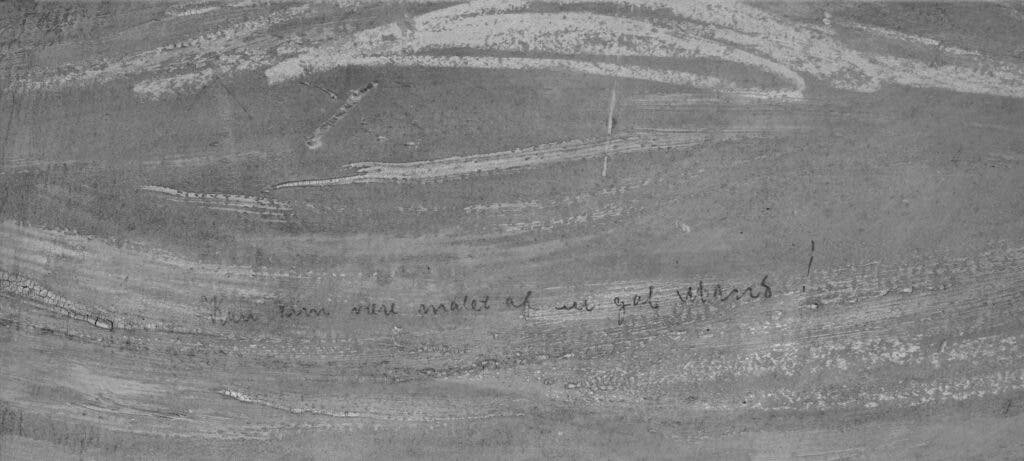
Edvard Munch’s 19th-century masterpiece The Scream, which features a swirling sunset and an anguished human figure is one of the most recognizable paintings in the world. It’s been featured countless times in pop culture with various renditions appearing in film, literature, art, and animation. But what most art enthusiasts don’t know is that the painting also has a provocative inscription.
The inscription, which is visible with the naked eye, reads “Kan kun være malet af en gal Mand!” (“Can only have been painted by a madman!”). Now, using infrared investigations, scientists working in collaboration with Norway’s National Museum in Oslo have confirmed that the damning sentence was written by Munch himself.
The Scream was first shown to the public in 1895 at a private art gallery in Oslo, and it immediately sowed controversy due to its portrayal of deep existential angst. There are actually four versions of The Scream, the most prized version being the oil painting at the National Gallery in Oslo — this also happens to be the one with the scribbled sentence.
Art historians have debated whether the sentence — first noticed in 1904, almost 11 years after its creation — was etched by some art vandal during one of the painting’s exhibitions or by Munch himself, who had his own battle with mental health problems that were deeply stigmatized by the society of his time.
An entry in Munch’s diary, dated 22 January 1892, recorded the inspiration for The Scream: “I was walking along the road with two friends – the sun went down – I felt a gust of melancholy – suddenly the sky turned a bloody red. I stopped, leaned against the railing, tired to death – as the flaming skies hung like blood and sword over the blue-black fjord and the city – my friends went on – I stood there trembling with anxiety – and I felt a vast infinite scream through nature.”
Diary entries like these, as well as letters, spoke of an artist who was very sensitive and perceptive. He was also concerned for his mental health, seeing how both his grandfather and father suffered from depression, while his sister Laura was admitted to the psychiatric ward at times.

But according to Britt Culeng, a curator at the National Museum, Munch’s writing on the painting isn’t an admission of lunacy. Ever since his paintings were exhibited, there were many critics that considered Munch insane. In this context, Culeng says, Munch is actually being ironic for he considered himself very much sane.
“The inscription can also be seen as a way to take control of his own life and his own feelings. It is an unorthodox thing to do—to write on your own painting. However, in this way, he shows that he is in charge of the situation,” Culeng said.









